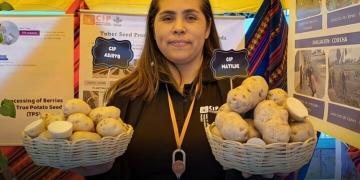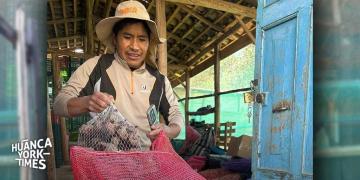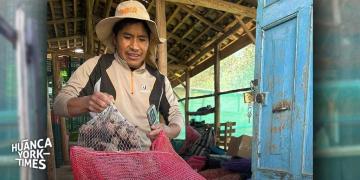Peru: "CIP-Asiryq’", the new late blight resistant variety
It requires less fungicide application, cooks 25% faster than other varieties, and is considered to have "great potential" for direct sale in markets.

A new, disease-resistant potato variety was presented in Peru as a "lifeline" for farmers battling late blight, the plague that caused a major famine in 19th-century Ireland, after being developed by scientists from the International Potato Center (CIP), with the participation of indigenous communities.
The new variety, called ’CIP-Asiryq’ (smile, in Quechua), requires less fumigation with fungicides, cooks 25% faster than other varieties and is considered to have "great potential" for direct sale in markets as well as for processing, the international organization Crop Trust said in a statement released in Lima.
"This new and resilient variety offers potato farmers an option that can reduce losses, lower costs and strengthen food security in Peru and around the world," said Stefan Schmitz, the organization’s director.
The variety was developed with the species ’Solanum cajamarquense’, a wild relative of the potato that is preserved in the germplasm bank of the CIP in Lima, where the largest and most diverse collection of potatoes in the world is kept.
The initiative was made possible thanks to the ’Biodiversity for Opportunities, Livelihoods and Development’ (BOLD) project, both led by the Crop Trust and funded by the Government of Norway.
The fight against late blight
In this regard, Thiago Mendes, CIP scientist and leader of the BOLD potato pre-breeding project, stated that "late blight has been a huge burden for potato farmers around the world, so the development of a new variety that is resistant to it represents a major step forward for food systems, in the Andes and beyond."
Besides having triggered famine in Ireland two centuries ago, late blight is estimated to "still cost farmers between $3 billion and $10 billion a year worldwide," the experts added.
For this reason, Mendes explained that the new potato was developed in Peru "by identifying wild potatoes with resistance to the disease" and that its "parent plants are preserved in the CIP germplasm bank, which can share them with potato improvement programs in any country."
In turn, Raúl Ccanto, coordinator of the agrobiodiversity area of the Yanapai Group researchers’ association, who participated in the project, remarked that the new variety "was developed for fresh consumption, but some producers have been cultivating it for processing."
Benjamin Kilian, coordinator of the BOLD project at the Crop Trust, said that this new potato "is a powerful testament to the impact that global collaboration has in the real world."
Fuente: forbes.pe




